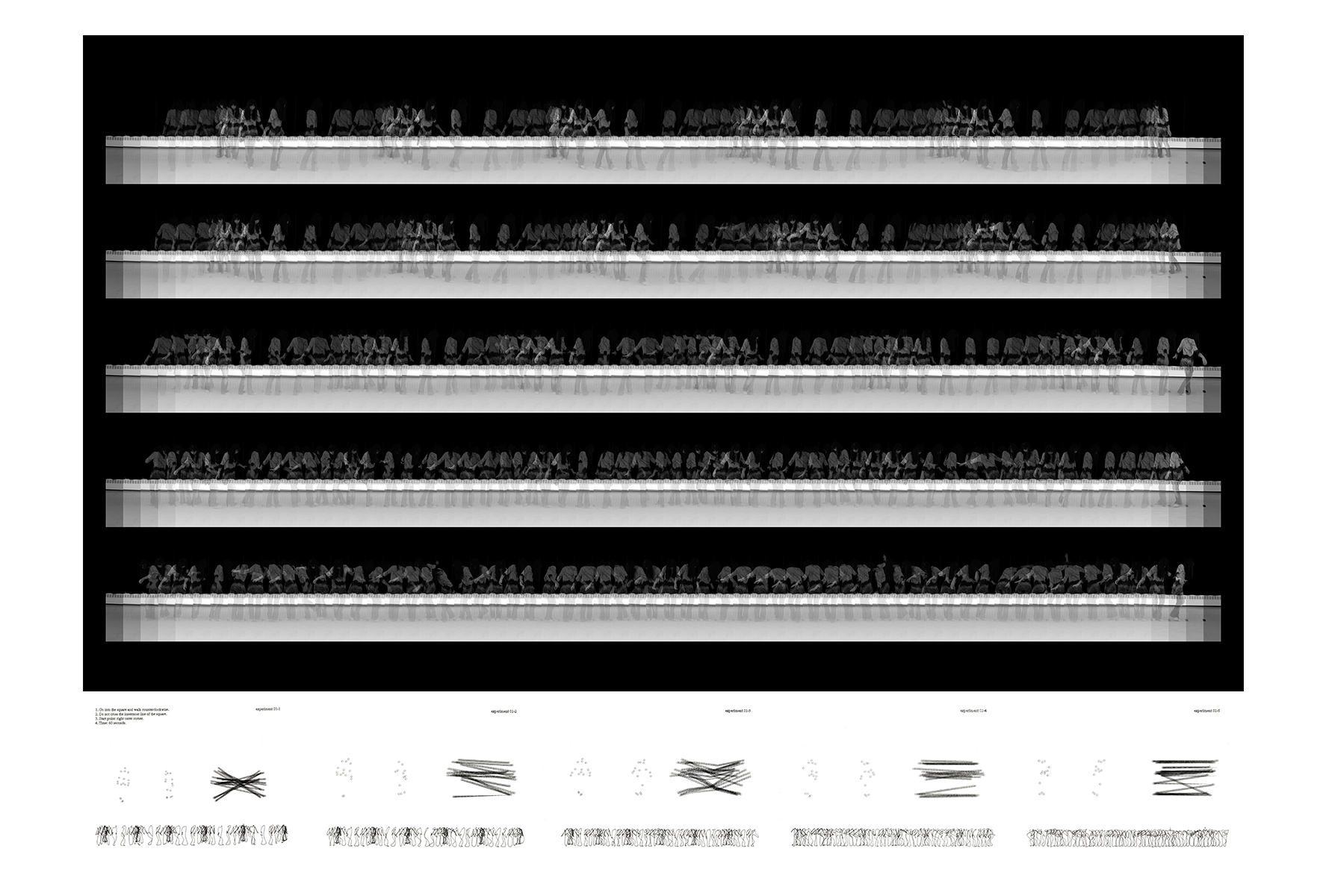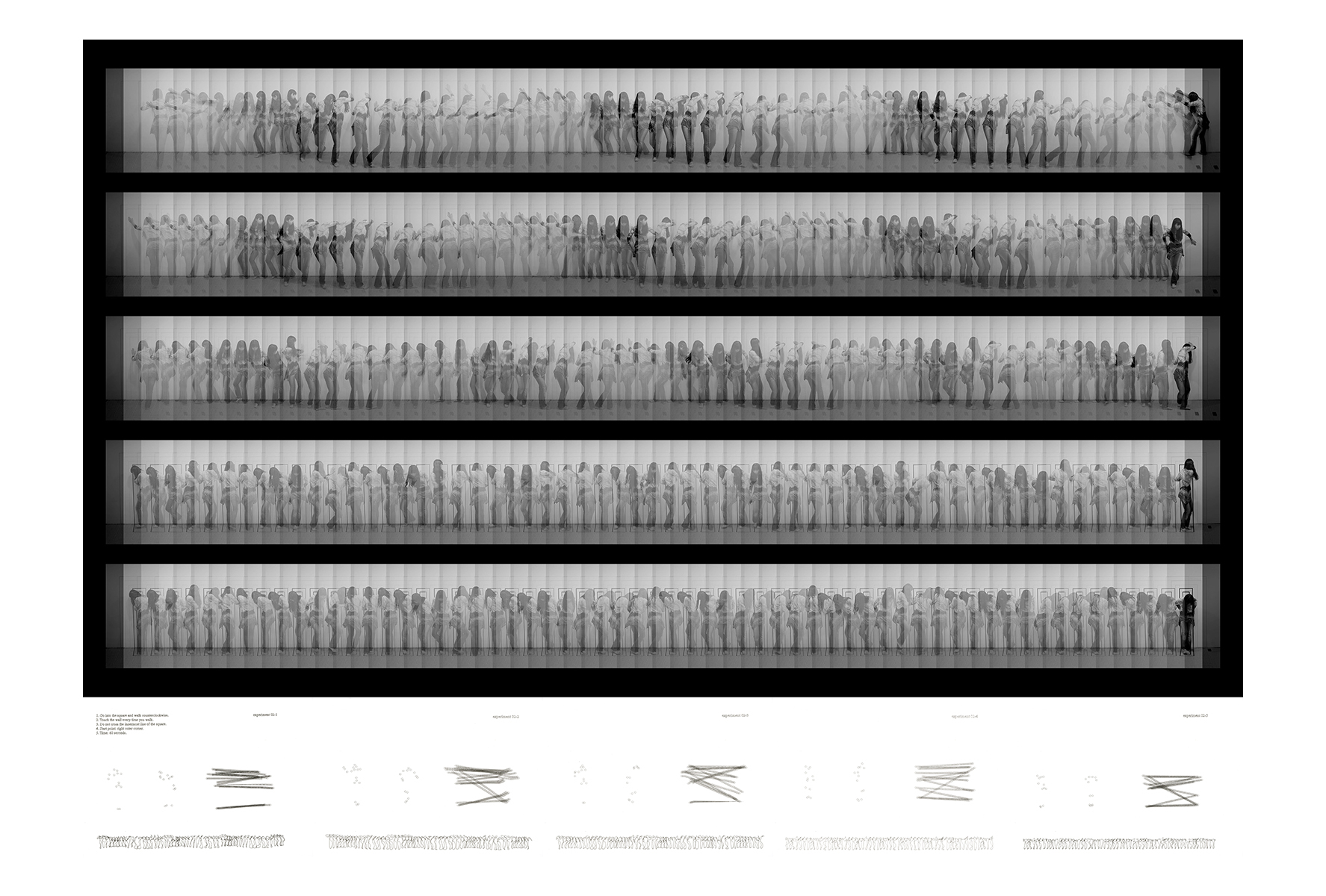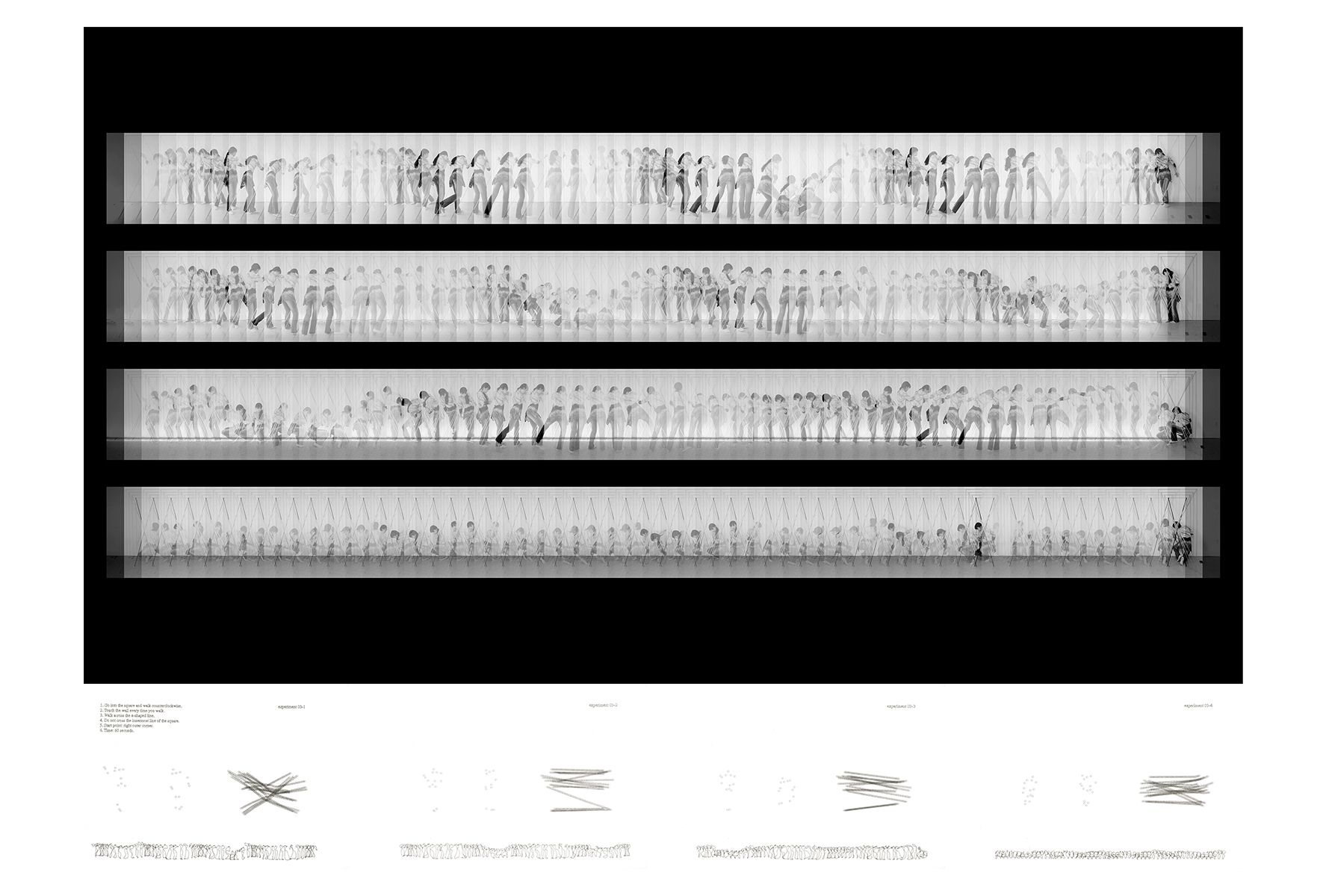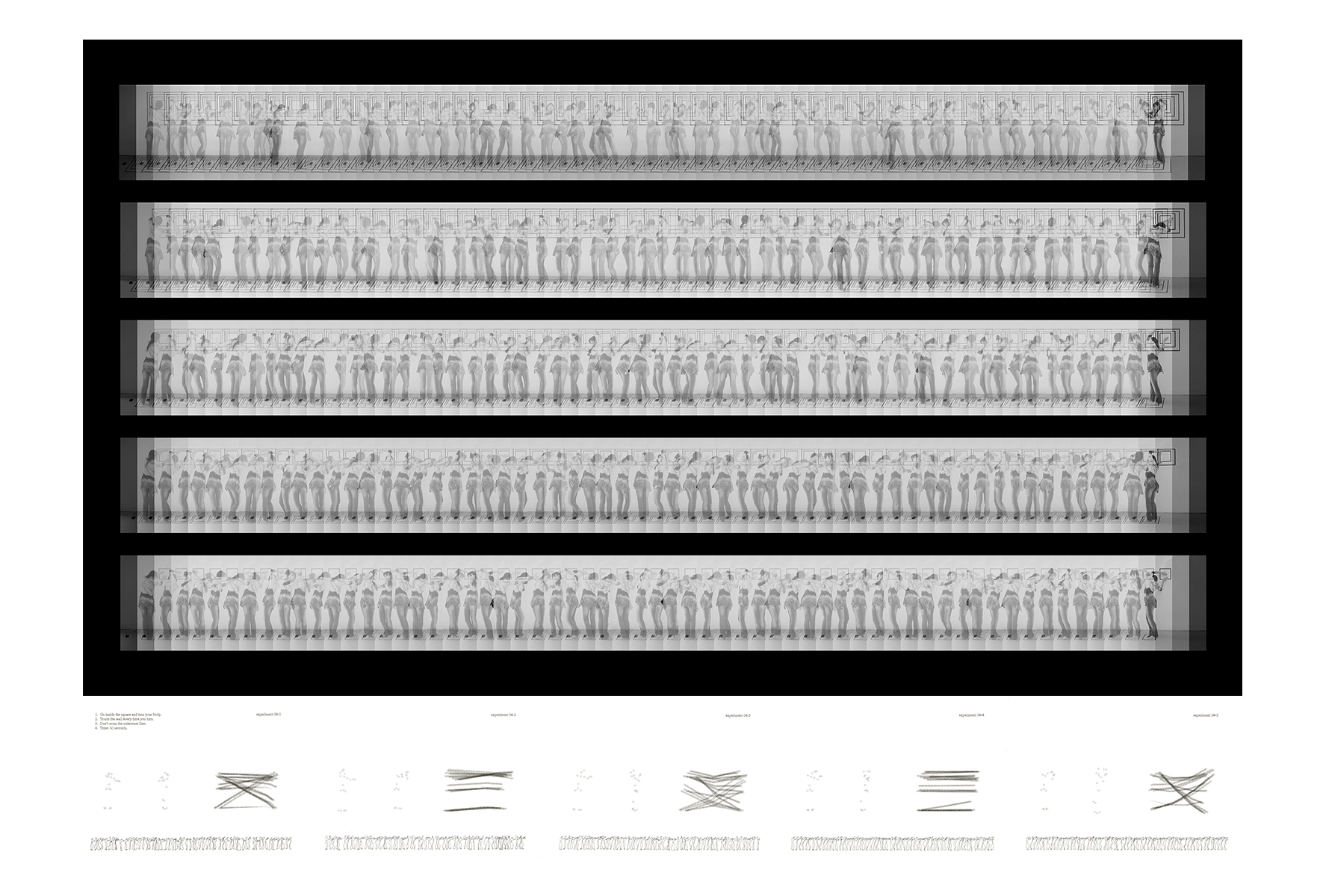Movement Experiments
Yukyung Chung
→ MFA D+M 2023
In the subject that I am studying, “mechanization of human beings,” I use movement as a tool. These days, there are many technologies that replace humans, such as artificial intelligence. As an artist, I have a natural skepticism and fear towards AI as it could replace me and my work. However, many people (including myself) are enthusiastic about it, supporting the idea of embracing the mechanization process as a society.
Within my project “Movement Experiments,” I aimed to reveal the possibility of coexistence with humans and machines in the age of mechanization. I attempted to do this by showing that perhaps it is not possible for machines to replace humans. In my '”movement experiments” humans were instructed and operated like a machine, moving by a manual.
I believe that humans have their own language, which I define as “intuition.” Through our immediate reactions, judgments, and errors we make along the way, we demonstrate unique human qualities that machines do not have. In this project, I investigated human’s intuition by experimenting with space and time restrictions. Inspired by Bruce Nauman and his piece Dance or Exercise on the Perimeter of a Square (Square Dance) (1967–1968), I embarked on a creative exploration of movement in space. By marking shapes in a given space, I took on the role of an interpreter, allowing myself to freely translate these shapes through movement. To engage with the space and its shapes, I gave myself specific instructions, providing a framework for my movements.
By interpreting shapes through movement within the minimalist space, constrained by time, and following specific instructions, I aimed to identify the limits of agency within these boundaries and how the imposition of rules and constraints can impact one’s ability to act freely and make independent decisions. To capture these subtle nuances, I documented my movements as still images, with each frame aligned every second to provide a comprehensive overview of the entire sequence.
The ultimate goal of this project is to explore how my intuition responds to changes in the minimalist spatial structure and my movements as directed. Through this endeavor, I hope to gain a deeper understanding of human movements and behavior patterns that machines cannot capture or translate, despite this era of emerging technologies with potential to replace humans.
Human intuition is not just a tool for making decisions; it’s the essence of our being. It is what drives us to explore, create, and express ourselves uniquely. The imperfections, immediate reactions, and unexpected errors make us who we are.
My fascination with human intuition is deeply rooted in my fear of being replaced as an artist in this age of rapid technological advancement. The fear of being made obsolete by AI and machines is a very real concern for many in the creative field. Yet, at the same time, I hold great hopes for technology. I believe that we can coexist with machines, and they can be tools for enhancing our creativity rather than replacing it.
These contradictory feelings are at the heart of my work. They drive me to investigate the limits of agency within the boundaries of rules and constraints, to understand how technology can assist and amplify human creativity while acknowledging its limitations in replicating the richness of human intuition.
My project seeks to serve as a reminder that while machines can be powerful tools, they can never fully replicate the depth and richness of the human experience, especially the intricate dance of intuition that defines our humanity.
—
Experiment 01.
1. Go into the square and walk counterclockwise.
2. Do not cross the innermost line of the square.
3. Start point: right outer corner.
4. Time: 60 seconds.
 All images by the author.
All images by the author.
Experiment 02.
1. Go into the square and walk counterclockwise.
2. Touch the wall every time you walk.
3. Do not cross the innermost line of the square.
4. Start point: right outer corner.
5. Time: 60 seconds.

Experiment 03.
1. Go into the square and walk counterclockwise.
2. Touch the wall every time you walk.
3. Walk across the innermost line of the square.
4. Do not cross the innermost line of the square.
5. Start point: right outer corner.
6. Time: 60 seconds.

Experiment 04.
1. Go into the square and turn your body.
2. Touch the wall every time you turn.
3. Do not cross the outermost line.
4. Time: 60 seconds.

Experiment 05.
1. Go into the triangle and walk.
2. Touch the wall every time you walk.
3. Do not cross the outermost line.
4. Start point: right outer corner.
5. Time: 60 seconds.

Experiment 06.
1. Go into the triangle and walk counterclockwise.
2. Touch the wall every time you walk.
3. Do not cross the outermost line.
4. Start point: right outer corner.
5. Time: 60 seconds.

Yukyung Chung is a multidisciplinary artist whose work explores the intersection of physical movement and technology.